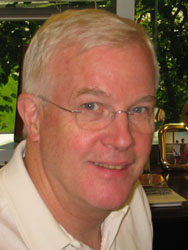Good Planning And Enrollment Lead To Clinical Success

By Ed Miseta, Chief Editor, Clinical Leader

When preparing for a clinical trial, many factors can affect the success of your effort. Roger Mills, MD believes two of the biggest factors are proper planning and recruitment. Mills recently retired from the pharmaceutical industry, but before doing so had a long and successful tenure in the industry. His final position was as a clinical lead for Janssen R&D where he was responsible for study activities.
“I believe one of the biggest challenges faced by the industry is proper planning for a clinical trial,” he says. “It’s something that oftentimes people do not place a huge focus on, but a lack of it can lead to bad consequences. I think in a lot of trials, the big question a lot of companies are struggling with is “What exactly are we trying to do?” Answering that question becomes particularly difficult in large trials.”
Proper planning is important in any endeavor. An old adage notes an hour or two in the library is worth a month or two in the lab. That is especially true when preparing for a large trial that can cost your company millions. Of course even the best plans can sometimes go awry.
Does Efficient Mean Fewer Partners?
 Mills gives an example of the struggles faced in one clinical trial in which he was involved. From the sponsor perspective, the concept was to do a Phase 3 trial with a large number of patients. Because of the size of the trial and the number of patients, the company wanted to perform an efficient and focused study. From the outset, the goal was to try to look at one primary question without collecting a lot of extraneous data.
Mills gives an example of the struggles faced in one clinical trial in which he was involved. From the sponsor perspective, the concept was to do a Phase 3 trial with a large number of patients. Because of the size of the trial and the number of patients, the company wanted to perform an efficient and focused study. From the outset, the goal was to try to look at one primary question without collecting a lot of extraneous data.
“Unfortunately, if you want to recruit in the U.S. or Europe, which is critical for large pharma companies, this strategy means you lose some attractiveness to your academic partners,” says Mills. “If you try to keep your study focused, that also makes it less interesting to them because they do not have the potential for sub-studies that they can turn into multiple papers.”
As a result, Mills notes there is an inherent conflict between trying to make the trial as focused as possible and including enough subjects and data to keep key partners interested in the study. This creates tension between the sponsor and academic partners, while also creating a divide between what partners would like you to do and what you can actually afford to do.
The cost of trials is a huge challenge for pharma,” says Mills. “The bottom line metric for companies is the number of dollars per patient in the trial. When a trial has 5,000 patients at a cost of $20,000 per head, the expense is pretty substantial. There is no way to cut the cost of trials unless we can cut down on the dollars per patient. The challenge is figuring out how to do that, which can be difficult when someone is always there asking you to collect more data.”
Do We Still Have A Recruitment ‘Model’?
In addition to proper planning, effective patient recruitment is also critical to clinical trial success. When it comes to recruiting patients, the old paradigm of hiring a CRO to engage sites and mine for patients may soon be history. A host of new technologies are changing how pharma performs feasibility studies and recruits patients for studies.
“There is no question that social media and patient advocacy groups are impacting the recruitment process; the challenge now is figuring out how to properly leverage them.” This is something Mills has been hearing a lot of discussion about at ACRP and other industry groups.
“Right now, patient recruitment seems to be a complete wilderness from the point of view of Big Pharma,” he states. “I don’t think we are really in tune to what is happening on social media. It is not so much the patients as it is their children and other family members. At one time, most people simply followed the advice of their physician. Today, if a doctor tells grandpa he should be in a clinical trial, every family member is immediately on the Internet checking it out. That is a whole new ballgame and one the pharma industry is not familiar with.”
Enrollment is a challenge throughout the industry and Mills would hear about the difficulties from connections in all of the Big Pharma companies. He believes the enrollment per study per site in the U.S. and Western Europe is dismal, and recruitment methods have to change. What is not clear at this point is what the best solution will be.
“We no longer know what really works and what doesn’t,” he says. “We are at a point where companies are recruiting via sites, the Internet, social media, patient groups, and even mobile devices. You can’t afford to try everything in what is a totally new game; how do you know what works?”
Mining EHRs: A Needed Skill
Electronic Health Records (EHRs) are another new development. Shortly before his retirement, Mills made a number of site visits for one large trial. He notes it is now a given that sites will have EHRs, and once they come into play, the recruitment game changes.
“The main recruiting issue is no longer how nice, warm, friendly, or persuasive the clinical study personnel are,” he says. “It has become how adept are they at combing those EHRs to find candidates suitable for a trial. Being warm and personable is important, but only once you identify the patients. The sites I visited that really seemed to be succeeding at recruitment were the ones where the clinical study nurses knew how to find patients with combinations of data in the EHRs. That is a new ballgame for the industry and for those nurses it is also a totally new skillset to be developed.”
Mills believes one of the hot new opportunities in clinical research going forward will be the ability to data mine those records. He gives an example of visiting a large health system in Indianapolis looking for heart failure patients. While there, he became aware of two different health record systems.
“They told me the emergency room health records were not directly connected to the hospital lab records,” he states. “I asked if they could screen the ER lab records for one variable and then try to find the other variable in the hospital records. They said they didn’t know how to do that.”
At that point Mills realized there was likely a profitable opportunity that existed in EHRs. If recruiting patients remains a challenge, and if finding patients using EHRs is the solution, then individuals possessing those skills will be in high demand. Hiring the right individuals, or getting your own employees trained in how to best mine the data, will be critical to sponsor companies as well as CROs. Only then will companies have the skills to properly mine that data.
“I’m retired and not looking to start a new venture,” he quips. “But if I had the time and energy to do it, training people to find the right patients from electronic records could be a great growth opportunity.”
